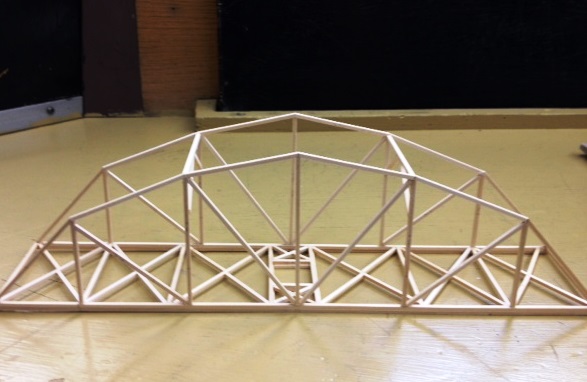Courses by Software
Courses by Semester
Courses by Domain
Tool-focused Courses
Machine learning
POPULAR COURSES
Success Stories
BENCHMARKING
OBJECTIVE :
To suggest Mr.Pughazhyendhii a suitable car as per his requirements.
INTRODUCTION :
We first discuss why to benchmark, including learning, coordination and motivation. We then sketch the economist’s ideal of a performance evaluation and the
practical problems of using this in real contexts. We also discuss a common practical approach of using one or a few Key Performance Indicators (KPIs). We explain the fallacy of such approaches and the need for more model based, systematic
benchmarking where a technology is estimated and performance is measures here to.
BENCHMARKING :
Benchmarking is the process of measuring key business metrics and practices and comparing them with in business areas or against a competitor, industry peers, or other companies around the world to understand how and where the organization needs to change in order to improve performance.
Benchmarking is a tool for assessing and comparing performance in order to achieve continuous improvement. It is part of a total quality management process, and includes the following key elements: Focuses on processes rather than outcomes.
WHY BENCHMARKING
It is comparison of production entities. The idea is that we compare entities that transform the same type of resources to the same type of products and services. The production entities can be firms, organizations, divisions, industries, projects, decision making units, or individuals.
TYPES OF BENCHMARKING :
Generic Benchmarking:
Generic benchmarking broadly conceives how unrelated business functions or processes may be carried out in similar or identical manners regardless of the field your company belongs to. For example, an employee benifits provider could compare its strategy for offering health insurance (i.e., how often funds are disbursed) to an insurance firm’s method for offering 401k and retirement plans. This may be a good form of benchmarking to begin with because of how general it is; you may use it to compare your business to almost any other organization in the world.
Functional Benchmarking :
This type of benchmarking involves comparing results across different industries and processes by utilizing similarities in functional capacities. Functional benchmarking serves as a way to provide information on industry trends. For example, a local coffee shop could compare its brand recognition to those of nearby fitness centers. Alternatively, a luxury hotel could benchmark its customer service quality to that of an airline company.
Internal Benchmarking :
Internal benchmarking refers to a comparison of one business process to another similar procedure within your company. For instance, you can evaluate how your organization s medical plans price-quality ratio has changed over a given period of time (due to changes in the plans’ costs or the benefits offered)
Competitive Benchmarking :
This involves directly comparing one of your processes, products, or services with a competitor’s. An example of competitive benchmarking would be to compare the employee benifits provided by one manufacturing company in California and those offered by other firms in this industry. Gaining this type of insight can be very helpful in implementing strategies designed to attract and retain key employees.
Strategic Benchmarking :
As its name indicates, this type of benchmarking pertains to your business strategies and how these may help you gain an edge in your field. Regardless of your industry, there are many different tactics you can take to become more competitive.
Performance Benchmarking :
This is a relatively more difficult type of benchmarking because you need to understand key performance metrics (e.g., number of employees retained in a year) and processes to conduct it. You will likely need to devise a long-term change plan as part of the performance benchmarking process.
PROBLEM STATEMENT :
Mr. D.S. Pughazhyendhii is a married man who lives in Bangalore which is a highly crowded city. His Family comprises five members including his wife, five-year-old boy, his father, and his mother. He visits his native place Madurai which is 500kms away from Bangalore once in a month. Also, he will be using his car to commute to his office. His budget falls between 8 to 10 lakhs on road. Please suggest to him with options so that he will buy a good car for his family. And pughazhyendhii is fond of big cars.
REQUIREMENTS :
- A car suitable for five members which includes a child.
- It should be with good mileage.
- Price range between 8-10 lakhs.
- He will prefer a big car
SOLUTION :
By analysing the present market I have came up with following cars and specifications.
- TATA Nexon XM (Petrol)
- TOYOTA Urban cruiser mid grade
- HYUNDAI Venue (1.0 Turbo iMT)
- MAHINDRA XUV 300
COMPARISON OF SELECTED VEHICLES :
| VEHICLE NAME | PRICE | POWER (bhp) | TORQUE (NM) |
FUEL EFFICIENCY(KMPL) |
SAFETY RATINGS |
ENGINE DISPLACEMENT (CC) |
| TATA Nexon XM | 8.54 lakhs | 118@5500rpm | 170Nm | 17.4 KMPL |
ADULT-5 CHILD-4 |
1199CC |
| TOYOTA URBAN CRUISER MID GRADE MT | 9.0 lakhs | 104.72@6000rpm | 138Nm | 17.03 KMPL |
ADULT-4 CHILD-3 |
1462CC |
| HYUNDAI VENUE S+ | 8.78 lakhs | 83@6000rpm | 113.8 Nm | 18 KMPL |
ADULT-4 CHILD-3 |
1197CC |
| MAHINDRA XUV300 | 8.41 lakhs | 85.8@3750rpm | 200Nm | 17KMPL |
ADULT-5 CHILD-4 |
1497CC |
|
MAHINDRA XUV300 |
TATA NEXON XM |
HYUNDAI VENUE |
TOYOTA URBAN CRUISER |
CHILD SAFETY IN TATA NEXON

TECHNICAL SPECIFICATIONS OF TATA Nexon XM
- It featured with dual airbags.
- It has high strength steel structure absorbs impact energy and protects the passenger during an unfortunate collision.
- It comes with electronic stability program, traction control, emergency brake assist, hill hold control, brake disc wiping.
- Nexon puts the safety of your child on utmost priority with NCAP rating of 4stars.
- Crash locking tongue for absolute driver safety during impact.
- It comes with multi drive modes of Eco,City,Sport, so according to drive modes can be switching to.
CONCLUSION :
After comparing all the cars mentioned above I would highly recommend Mr.D.S.Pughazhyendhii TATA Nexon XM (Petrol variant) as its has a good safety ratings with maximum power of 118bhp@ just 5500rpm and maximum torque of 170Nm which is obviously better than its major rival toyota and mahindra XUV300.
Leave a comment
Thanks for choosing to leave a comment. Please keep in mind that all the comments are moderated as per our comment policy, and your email will not be published for privacy reasons. Please leave a personal & meaningful conversation.
Other comments...
Be the first to add a comment
Read more Projects by DHANASEKARAN A (8)
Week 9 - Challenge 2 - Switch Bezel Design
Tooling Axis Creation Take the class A surface Extract the bottom face and create the Origin Point Choose the Line command and make the axis normal to the Extracted surface. But in the bisection method, there are some errors during the draft analysis of the sidewall. Select the YZ plane and position…
27 Jun 2023 10:25 AM IST
Week 9 - Challenge 1 - Base Bracket Design
METHOD FOR DRAFT ANALYSIS - First I checked the possible direction for the draft analysis in my case the z-direction was the best possible way to take the draft analysis, then I created the dummy tooling axis for the reference of x,y,z-direction.then took a plane in refrence to yz-plane and took a intersection in…
24 Jun 2023 05:37 PM IST
Underbody Coating
UNDERBODY COATING OBJECTIVE : To learn about underbody coating in the view of automobile and other general parts, also why underbody coating, types of under bodycoating in brief. INTRODUCTION : An undercoat is used after a primer. It is used to…
18 May 2022 06:33 PM IST
Benchmarking
BENCHMARKING OBJECTIVE : …
18 May 2022 11:27 AM IST
Related Courses






0 Hours of Content

Skill-Lync offers industry relevant advanced engineering courses for engineering students by partnering with industry experts.
Our Company
4th Floor, BLOCK-B, Velachery - Tambaram Main Rd, Ram Nagar South, Madipakkam, Chennai, Tamil Nadu 600042.
Top Individual Courses
Top PG Programs
Skill-Lync Plus
Trending Blogs
© 2025 Skill-Lync Inc. All Rights Reserved.











